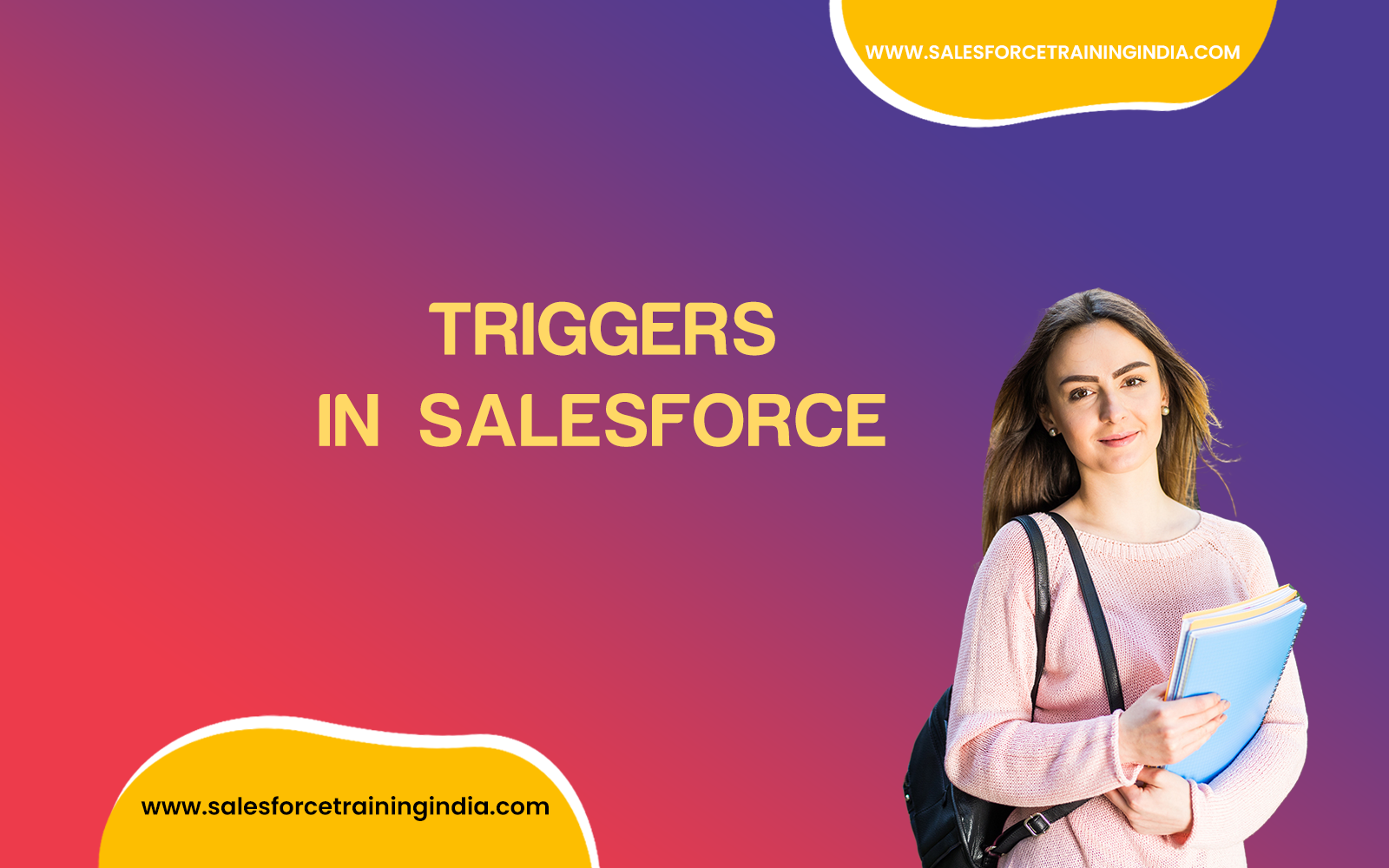Triggers in Apex are like automated reactions that happen in response to changes in your Salesforce data. They allow you to add custom logic to your Salesforce objects, such as Leads, Contacts, or Opportunities, so that specific actions occur automatically when certain conditions are met. Think of them as “if this happens, do that” rules for your data.
Why Triggers Are Important
Imagine you have a customer database, and you want to send a welcome email every time a new customer is added. Instead of manually sending emails every time, you can use a trigger to do it automatically. Triggers are valuable because they:
- Automate Tasks: Triggers automate repetitive tasks, saving you time and reducing the risk of human error.
- Maintain Data Integrity: They ensure that your data remains consistent and follows predefined rules.
- Customize Processes: You can tailor triggers to match your unique business needs, adding custom behavior to standard Salesforce objects.
How Triggers Work
Triggers are defined in Apex code and are associated with specific objects (like Contacts or Accounts). They consist of two main parts:
- Trigger Event: This specifies when the trigger should run. It could be when a record is created, updated, deleted, or even before or after those events.
- Trigger Logic: This is the code that executes when the trigger event occurs. It checks conditions and performs actions based on those conditions.
Here’s a simplified example of a trigger:
trigger WelcomeEmail on Contact (after insert) {
for (Contact newContact : Trigger.new) {
// Send a welcome email to the new contact.
EmailService.sendWelcomeEmail(newContact.Email);
}
}In this trigger, when a new Contact is inserted, it runs the logic to send a welcome email to that Contact’s email address.
Common Use Cases
Triggers are versatile and can be used for various purposes, including:
- Sending automated emails or notifications.
- Updating related records when data changes.
- Enforcing data validation rules.
- Logging activities or changes for auditing.
- Integrating Salesforce with external systems.
Triggers are a powerful tool in Salesforce development, allowing you to create customized and automated workflows that streamline your business processes. Understanding how to use triggers effectively can greatly enhance the functionality and efficiency of your Salesforce applications.
FAQs
1. What are the two types of triggers in Salesforce?
In Salesforce, there are two main types of triggers: Before Triggers and After Triggers.
- Before Triggers execute before the record is saved to the database, allowing you to modify the record’s values before the database update occurs.
- After Triggers execute after the record has been saved to the database, making them suitable for operations that require access to the final state of the record, such as sending notifications or updating related records.
2. What is triggering in Salesforce?
Triggering in Salesforce refers to the process where specific events, such as insertions, updates, deletions, or undelete actions, cause triggers to execute. These triggers are pieces of Apex code that run in response to these database operations, allowing developers to automate and customize the behavior of the Salesforce platform. This automation can handle complex business logic, data validation, and interaction with other Salesforce features.
3. Where are triggers in Salesforce?
Triggers in Salesforce are located within the Salesforce platform’s Apex code. They are typically created and managed in the Salesforce Setup area under Apex Triggers. You can access and edit them by navigating to Setup > Apex Triggers. Here, you can define and configure the trigger’s behavior and associate it with specific objects and events.
4. How many triggers are there in Salesforce?
Salesforce allows you to create multiple triggers per object. Each object can have up to one before trigger and one after trigger. Additionally, you can have triggers on different events like insert, update, delete, and undelete. This flexibility lets you handle various operations and business logic for each object comprehensively.
5. Why do we go for triggers in Salesforce?
Triggers are used in Salesforce to implement custom business logic that cannot be achieved through standard workflow rules, process builders, or validation rules. They are essential for:
- Automating complex processes and workflows.
- Enforcing business rules and data integrity.
- Performing operations on related records, such as updating child records when a parent record is modified.
- Ensuring data consistency and handling specific business logic that is not supported by declarative tools.
6. What is the primary purpose of a before trigger in Salesforce?
The primary purpose of a before trigger in Salesforce is to perform operations before the record is saved to the database. This type of trigger is used to:
- Modify record values before they are written to the database.
- Validate data and ensure that only valid records are saved.
- Prevent unwanted data changes by adding custom logic for validation or transformation.
- Example uses include setting default values, validating fields, or performing checks before record insertion or update.
7. Why should we use triggers?
Triggers are crucial in Salesforce for:
- Implementing complex business logic that cannot be handled by standard automation tools like workflows or process builders.
- Ensuring data integrity and consistency by performing custom validation and manipulation at the database level.
- Automating repetitive tasks and integrating with external systems or APIs, enhancing the functionality and efficiency of Salesforce applications.
8. What are purpose triggers?
Purpose triggers, often referred to as purpose-built triggers, are designed to handle specific tasks or business logic within Salesforce. They are created to:
- Enforce business rules and logic that are unique to an organization’s processes.
- Facilitate integration with external systems or perform custom data operations.
- Automate workflows that require complex logic beyond the capabilities of standard Salesforce features.
- Improve system performance and maintainability by organizing code around specific business purposes.
9. Why we use trigger instead of flow in Salesforce?
While Salesforce Flows are powerful for automating processes, triggers are preferred in scenarios where:
- Complex Logic: Flows may not handle complex logic or bulk processing as efficiently as triggers.
- Performance Considerations: Triggers can be optimized for performance and are executed directly within the database context, often making them faster for specific operations.
- Real-time Execution: Triggers execute in real-time during data changes, making them suitable for tasks that require immediate processing and interaction with the database.
Triggers are typically used for real-time processing, whereas flows are ideal for creating user interfaces and sequential processes with easy-to-configure steps. The choice between triggers and flows depends on the specific requirements of the task and the complexity of the business logic involved.
Are you eager to excel in Salesforce? Look no further than our specialized Salesforce training in Hyderabad. We offer a comprehensive, project-based course that immerses you in real-time scenarios and equips you with practical skills and up-to-date knowledge. With a strong focus on daily notes, hands-on projects, and meticulous preparation for certification exams and interviews, our training ensures you’re fully prepared for the diverse challenges of the Salesforce industry.
Don’t delay in advancing your career. Enroll today in our Salesforce online course and benefit from personalized mentorship from seasoned instructors. Whether you’re starting from scratch or looking to deepen your expertise, our tailored program in Hyderabad is designed to empower your success. Take the initiative to elevate your professional journey with us.





